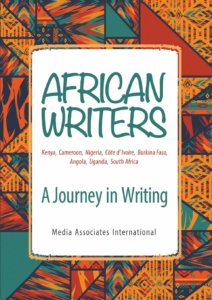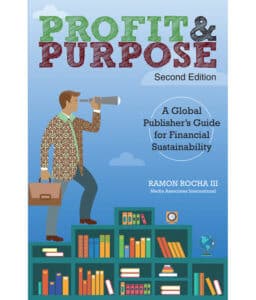As MAI’s director of publisher development and the former CEO of a Christian publishing house, Ramon Rocha III knows the in’s and out’s of both traditional and self-publishing. Writers around the globe frequently ask his views of self-publishing. We asked Ramon to share his insights on how authors can discern the best publishing route.
How do I know if self-publishing is right for my book(s)?
While a traditional publisher may have been your first option, there are a variety of other paths to getting your book published. Check out this helpful infographic, “Key Book Publishing Paths,” by Jane Friedman.
The popularity of self-publishing has increased over recent years due to several factors:
- the relative ease of “doing publishing yourself” as afforded by technology;
- diminished chances of manuscripts, especially by lesser-known authors, being accepted by traditional publishers due to financial constraints;
- the rise of social media and digital marketing that enables authors to reach readers faster and inexpensively.
Have you tried to submit a well-crafted book proposal to publishers—either directly or through an agent—but have been rejected several times? Do you have access to resources, including time and money? Are you willing and able to do your own marketing? If you answered “yes” to all these questions, you may want to try self-publishing. Then you can publish in print, e-book and even audio formats.
What are the advantages and disadvantages of self-publishing?
A reputable traditional publisher has the necessary and working “publishing machinery” already in place. When your manuscript is accepted, the publisher will take care of ISBN, structural and copy-editing, typesetting, proofreading, cover design, printing (and possibly e-book or audio formats), distribution, selling and marketing. You are paid a royalty rate, with or without an advance. As the author, you are still expected to help with publicity, sell copies to friends and contacts, maintain good relations with readers, and seek speaking opportunities.
With self-publishing, you take on all the work yourself from start to finish. Or you can hire the services of professionals to help you. But you, the author, are largely responsible for everything from the creation process to distribution and marketing. If your book is successful, you may earn more income compared to a royalty offered by a traditional publisher. Beyond the profit, you also have full control over your book.
Hybrid publishers may do the editing, cover design, printing, and even distribution, but you must pay for these services yourself. A traditional publisher may offer these services to you, too, but often with this arrangement the publisher’s logo will not appear on your book.
If I self-publish, should I pay for professional help along the way?
Certainly look for a good editor. No one is beyond editing. If you are not an excellent book designer, hire a typesetter and a cover designer. Look for professional help locally since face-to-face coordination is better when possible. Otherwise seek help from your international publishing contacts. Or browse Fiverr and shop for various tasks from international service providers.
What do I need to be aware of regarding marketing?
Book marketing is not only publicity. It starts with the quality of writing. Pursue excellence in all areas: writing, editing (beware of typos!), interior page and cover design. If you publish in print, ensure quality paper, inking, binding, broad distribution, and easy-to-purchase selling. You will also have to invest considerable time in “making a lasting connection with your target readers and finding ways to be relentlessly helpful to them” (Tim Grahl) through your own website, social media and email marketing, such as from a MailChimp account.
What can go wrong?
Your enthusiastic optimism could leave you with a thousand copies of your new book gathering dust in your house because it does not sell as fast as you hoped. Or worse, those thousand copies might be poorly edited and contain several typos. You can prevent that scenario via digital publishing, which allows you to make file corrections on the fly. You may also decide to publish an e-book only, or an e-book first to test the market, or combine it with print-on-demand.
Could you describe the digital publishing process for print and e-books?
This year at MAI we published Profit & Purpose and African Writers using two different print-on-demand (POD) companies: a local  printer that does quality POD, and a global POD/e-book supplier—IngramSpark. In order for our book files to be acceptable to both, I had to learn and abide by their individual “file preparation requirements.”
printer that does quality POD, and a global POD/e-book supplier—IngramSpark. In order for our book files to be acceptable to both, I had to learn and abide by their individual “file preparation requirements.”
After the editing process, we hired the services of a typesetter from overseas. We went back and forth with her several times to correct the inside pages. Two different artists created the cover designs for these two titles. Again, I had to ensure that our inside text and cover files met the specifications of our two printers. We also had the pdf of inside texts converted to the Epub format for the e-book versions.
After successfully uploading our files onto IngramSpark ($49 per title for both POD and e-book), I made a trial order of one copy of Profit & Purpose. When my order arrived, I noticed that the opacity (how noticeable the print is from the other side of the paper) of Ingram’s 50 lb. paper was not very good. So I changed my specs to “standard color,” still B&W text, but this time using 70 lb. paper. I made another trial order after this change, and the results were much better. The unit cost was higher with the 70 lb. paper but the quality was better. I also discovered the matte cover finish was much more attractive than the glossy one.
So our two books printed by the two POD printers were of the same specifications and quality. With the local POD company, we print 30 to 50 copies at a time. With IngramSpark, I can order one copy or more and ship to anywhere in the globe. I test ordered five copies of African Writers and shipped to contributing author Joan Campbell in Johannesburg, South Africa. The total cost was $28.80 USD. Although it took a month to reach her from Ingram’s printer in the UK, Joan was pleased with the print quality and that it arrived door-to-door. When I placed the order I needed to select UK as the printer location, not USA, otherwise we would have been charged more.
IngramSpark uploaded those two MAI titles, both print and e-book, onto Amazon, Barnes&Noble, Kobo and a few other e-retailers for global distribution.
Several other companies compete with IngramSpark, such as:
- Amazon’s Kindle Direct Publishing (but Ingram will upload your book to Amazon anyway),
- BookBaby
- Lulu
- BelieversBookServices
 When I visited South Africa recently, I learned about a good local POD supplier there, Burble. Research online to see if a local POD company serves your area.
When I visited South Africa recently, I learned about a good local POD supplier there, Burble. Research online to see if a local POD company serves your area.
For more resources, visit Janet Friedman’s website and blogs, which are helpful for authors and self-publishers. See her article, “Should you Self-Publish Or Traditionally Publish?” Consider subscribing to her free newsletters for tips and resources.
Ramon Rocha III is the author of Profit and Purpose: A global publisher’s guide to financial sustainability (second edition, 2019). He is director of publisher development at MAI where he leads MAI training to strengthen local Christian publishing in underserved areas of the world. As former CEO Of OMF Literature, Inc., in the Philippines, Ramon led it to become one of the nation’s largest Christian publishing houses. He was an entrepreneur for 12 years before entering the publishing industry.
Top Photo by Andrey Kravchenko, Ukraine


